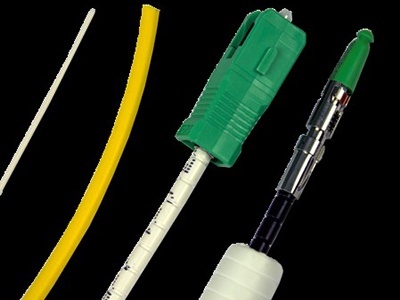 When it comes to choosing the amount and type of fiber to use in your system, protecting the fiber that carries telecommunications services is of primary importance. Between access fiber to the home (FTTH), and premise fiber to the CPE, there can be uncertainty about when to use which types of fiber cable. Today's most common options include:
When it comes to choosing the amount and type of fiber to use in your system, protecting the fiber that carries telecommunications services is of primary importance. Between access fiber to the home (FTTH), and premise fiber to the CPE, there can be uncertainty about when to use which types of fiber cable. Today's most common options include:
- 900µ fiber
- 900µ jacketed fiber
- 250µ fiber within a strong polymer (2-4mm)
- Fiber cable within microduct
Bringing fiber into a home requires that you carefully consider several factors to choose the correct cable. At all points in the FTTH installation, the fiber must be flexible, tough, and lightweight, and for residences, aesthetically pleasing. Most fiber cables can accommodate one or two of these features but not all four. In addition, you must factor cost into the equation as prices vary - however, the installation and operational cost far outweigh the capital. The bottom line is that each FTTH installation is somewhat unique – whether the site is a multiple dwelling unit or a single residence, there are many variables that will determine which types of fiber are most appropriate in the different parts of the installation. In most cases, one size will not fit all.
Depending on the installation, there are several different environments that your fiber will be operating in. In bringing fiber to a building or a home you will need a rugged, weather resistant cable. Once at the building, you must get the fiber through walls, possibly in basements, attics, or crawl spaces, and then through floors, walls and eventually through a room to the CPE location. That course of running a fiber may require a few different types of fiber in the same installation depending on the site. In many cases, you could have two or possibly three different fiber types to accomplish a reliable installation and the subsequent splicing and/or connectors added could make the scenario too costly.
For rugged spaces where your fiber may suffer damage, such as basements or in conduits sharing space with electrical or other wiring, you may choose a 3mm rugged sheathed cable that is flexible and crush resistant. The cable should also have the capability to be tacked to the structure and pulled or pushed through tight spaces and so will need to be rugged, crush proof and resilient. Some installations may require microduct, while there is a growing trend toward not using microduct. This makes it especially important that the fiber cable be rugged.
For intra-room installations where the fiber must be bent dramatically several times but doesn’t need to be run long distances, your best option may be a single 900µ fiber cable that is less crush resistant. Be sure to select a 900µ cable that can be easily fit into the décor of a room.
Separate each area in the installation according to its fiber environment, and then determine which fiber will be the best fit, according to the primary criteria below:


So be sure to carefully plan the fiber installation with the customer's quality of experience as a priority for both today as well as for the future years to come.


